
Vowels vs Consonants Definitions, Examples & PDF Enggrama
Well, no. Vowels and consonants are sounds, not letters. Depending on your accent and how thinly you slice them, there are about 20 vowels and 24 consonants. The difference between vowels and consonants A vowel is a speech sound made with your mouth fairly open, the nucleus of a spoken syllable.
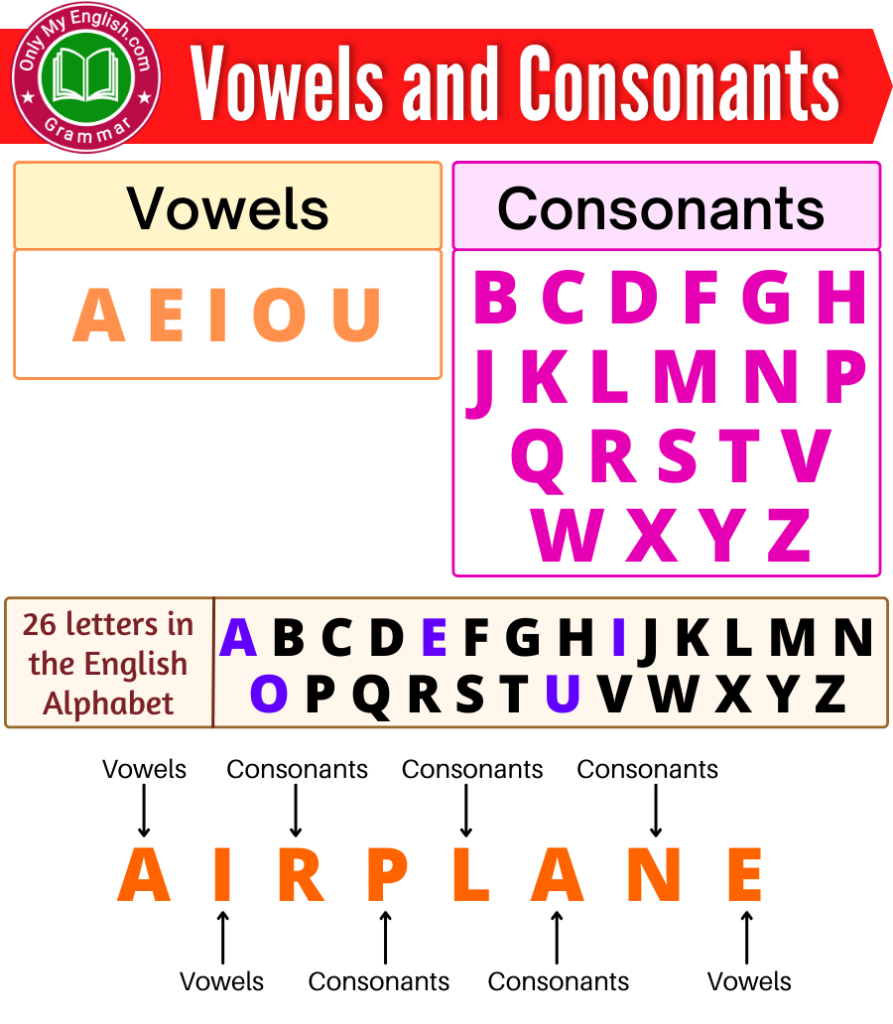
Difference Between Vowels And Consonants In English IMAGESEE
Video Script. Remember that the difference between consonants and vowels is that consonants have some obstruction in the vocal tract, whereas, for vowels, the vocal tract is open and unobstructed, which makes vowel sounds quite sonorous. We can move the body of the tongue up and down in the mouth and move it closer to the back or front of the mouth. . We can also round our lips to make the.
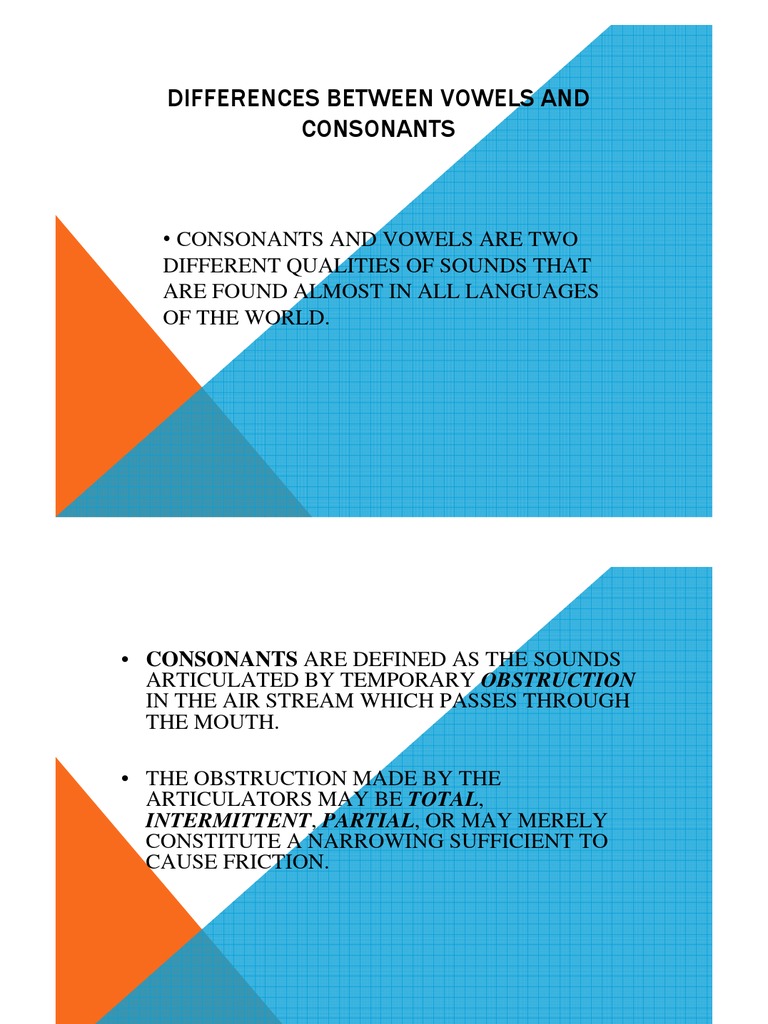
Differences Between Vowels and Consonants Consonant Vowel
While consonant sounds are differentiated by how the air is blocked—such as sticking the tongue behind the front teeth for d and t, or closing the lips for b, m, and p —vowel sounds are differentiated by pitch, accent, volume, and duration. So what are the vowels? The letters a, e, i, o, u —and sometimes y —are vowels.
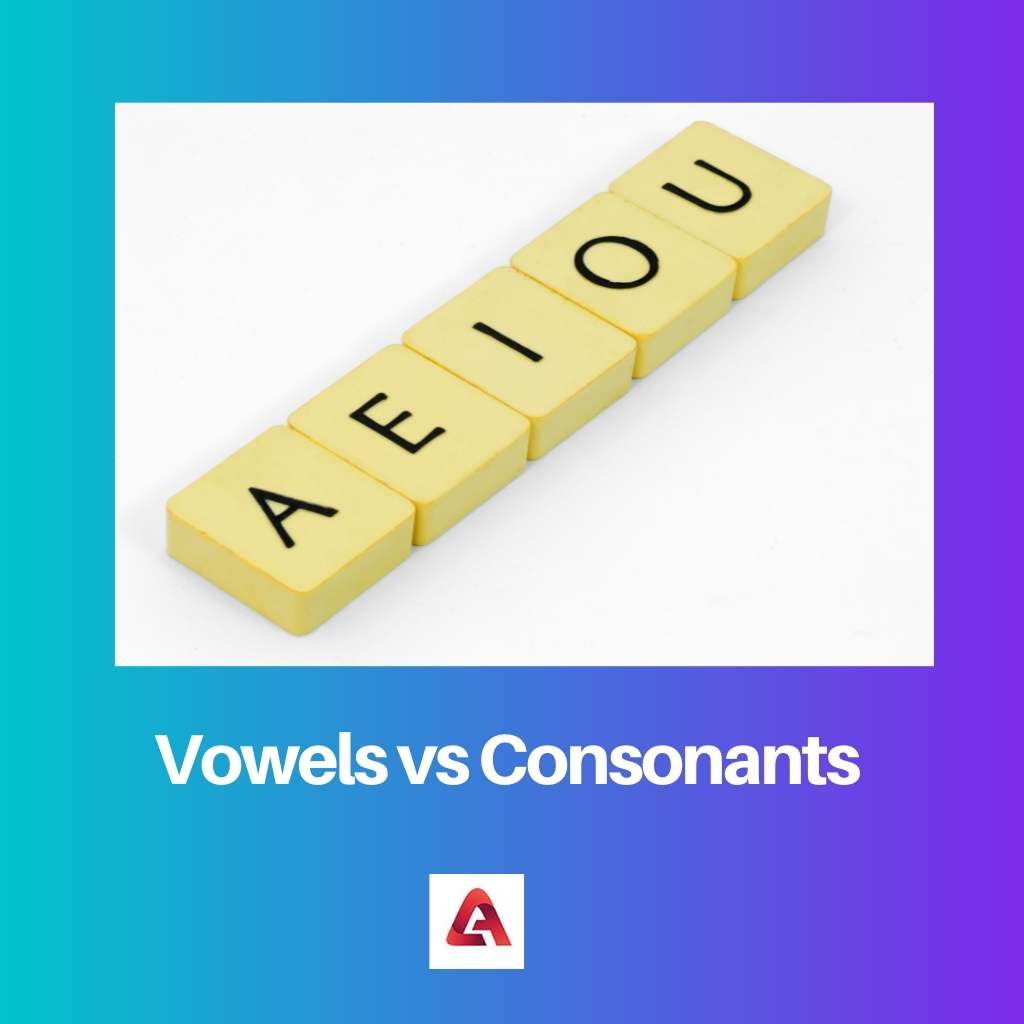
Vowels vs Consonants Difference and Comparison
A vowel is spoken with an open vocal tract, while a consonant is pronounced with a closed or partially closed vocal tract. This is the basic distinction between vowels and consonants. Consonants sound different from vowels. The length, loudness, and quality of vowels vary. Consonants are used to break up the vowel stream while we speak.

VOWELS & CONSONANTS What's the difference? Learn with examples
Consonants are letters that represent certain speech sounds, specifically sounds that involve blocking the air before it leaves the mouth, such as with the tongue, lips, or throat. Most letters of the English alphabet are consonants, except for a, e, i, o, and u, which are vowels.
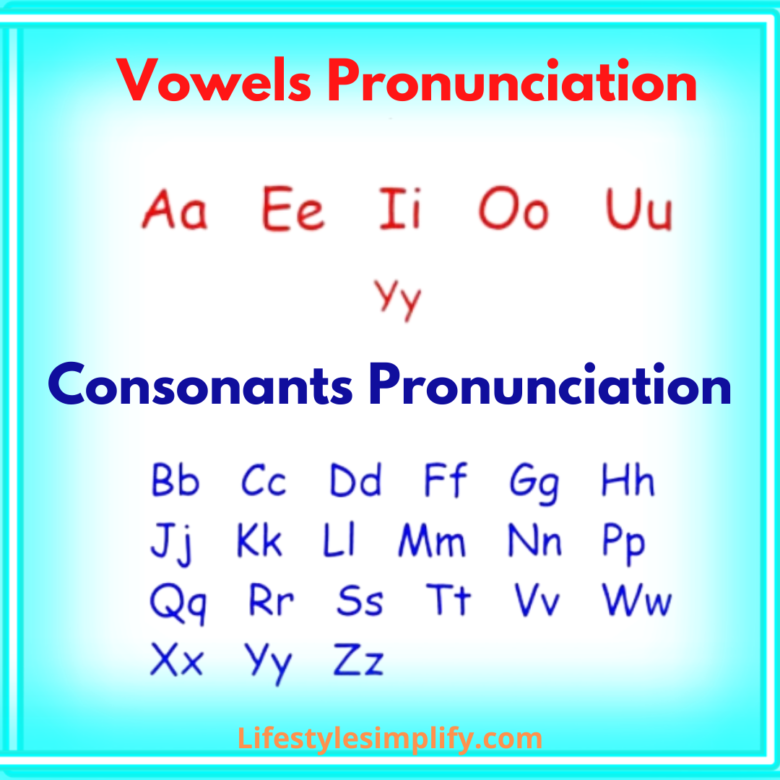
What are Vowels and Consonants in English?
There exist dual complementary classes of sounds of speech. These are, broadly, consonants and vowels. While writing or speaking, in principle, certain letters represent consonants and the sounds they make. Others similarly represent vowels. Vowels and consonants have similar relevance and space in writing and speech in the English language.

Vowels And Consonants Examples
Consonants and vowels are traditionally classified in two dimensions: place and manner of articulation. Place of articulation refers to the location of the narrowest part of the vocal tract in producing a sound. For example, for the consonant [b] the vocal tract is narrowest at the lips (in fact, it could not possibly any narrower here!).

The Key Differences Between Vowels and Consonants • 7ESL
Basically, vowels are syllable nuclei, and consonants are syllable peripheries. Consonants are the sounds that don't occur in the middle of a syllable, and vowels are the ones that do.. That's all, really. Aside from diphthongs like /ay/ in light, which involve tongue movement during pronunciation, vowels are determined by the shape of the resonating chambers formed by the tongue in the mouth.

Linking vowels to consonants Linking
Definition Key Differences Conclusion Comparison Chart Definition of Vowels Vowels refer to the speech sound generated with approximation by the open arrangement of vocal passage, with vibration in the vocal cord, without any blockage in the air track.
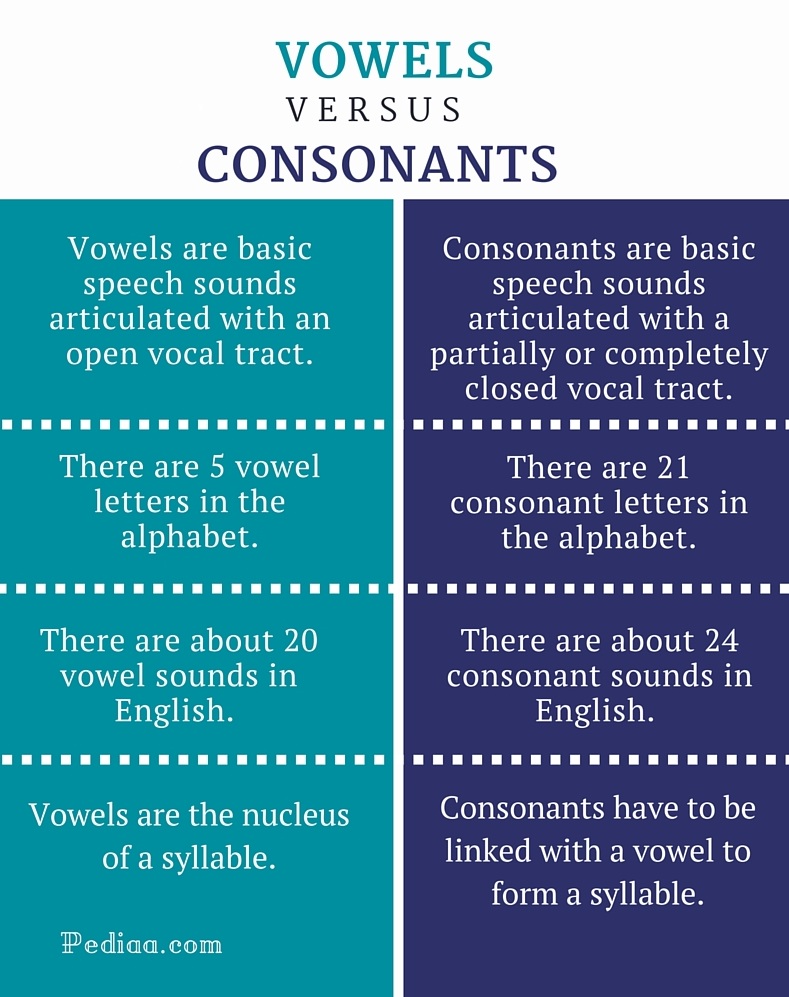
Difference Between Vowels and Consonants
The Key Differences Between Vowels and Consonants by 7ESL 2.6k Last Updated on February 10, 2020 Vowels and consonants are all of the letters of the English alphabet that represent unique speech sounds. They are symbols that let the reader know what a word should sound like.

What Are Vowels and Consonants? The Difference TPR Teaching
Vowels are sounds made with an open vocal tract, while consonants are sounds made with a partial or complete closure of the vocal tract. Vowels are the building blocks of syllables, while consonants provide the structure and shape of words. Vowels are pronounced with a clear sound, while consonants can have a more subtle or muted sound. Summary

Consonant and Vowel Sounds Bundle HuddleTeach
Tweet Key difference: The alphabets a, e, i, o, and u are called as vowels in the English language. Consonants are all the other alphabets of the English language, except the vowels. At times, the alphabet 'y' is also considered as a vowel.
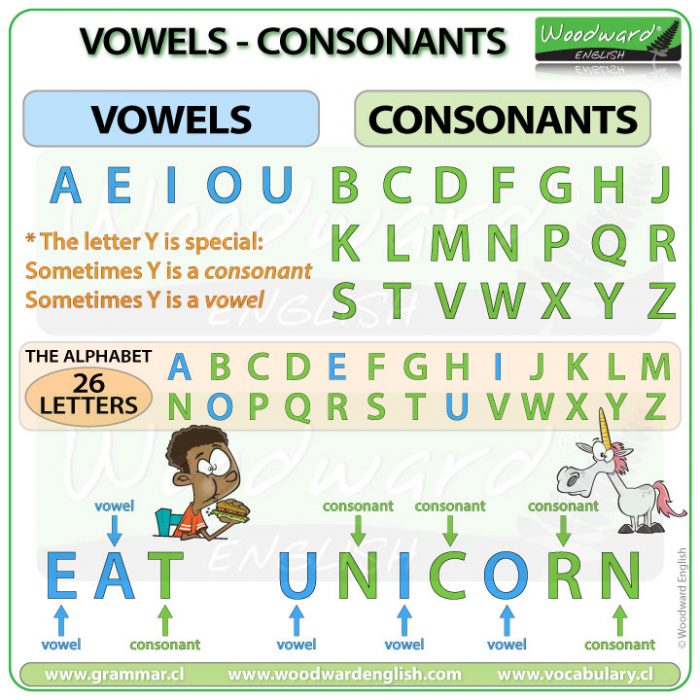
Vowels in English Consonants in English The English Alphabet
1. Vowels are five letters with sounds that are made with no blockage of airflow. Consonant letters have sounds that are blocked by the lips or the tongue. 2.
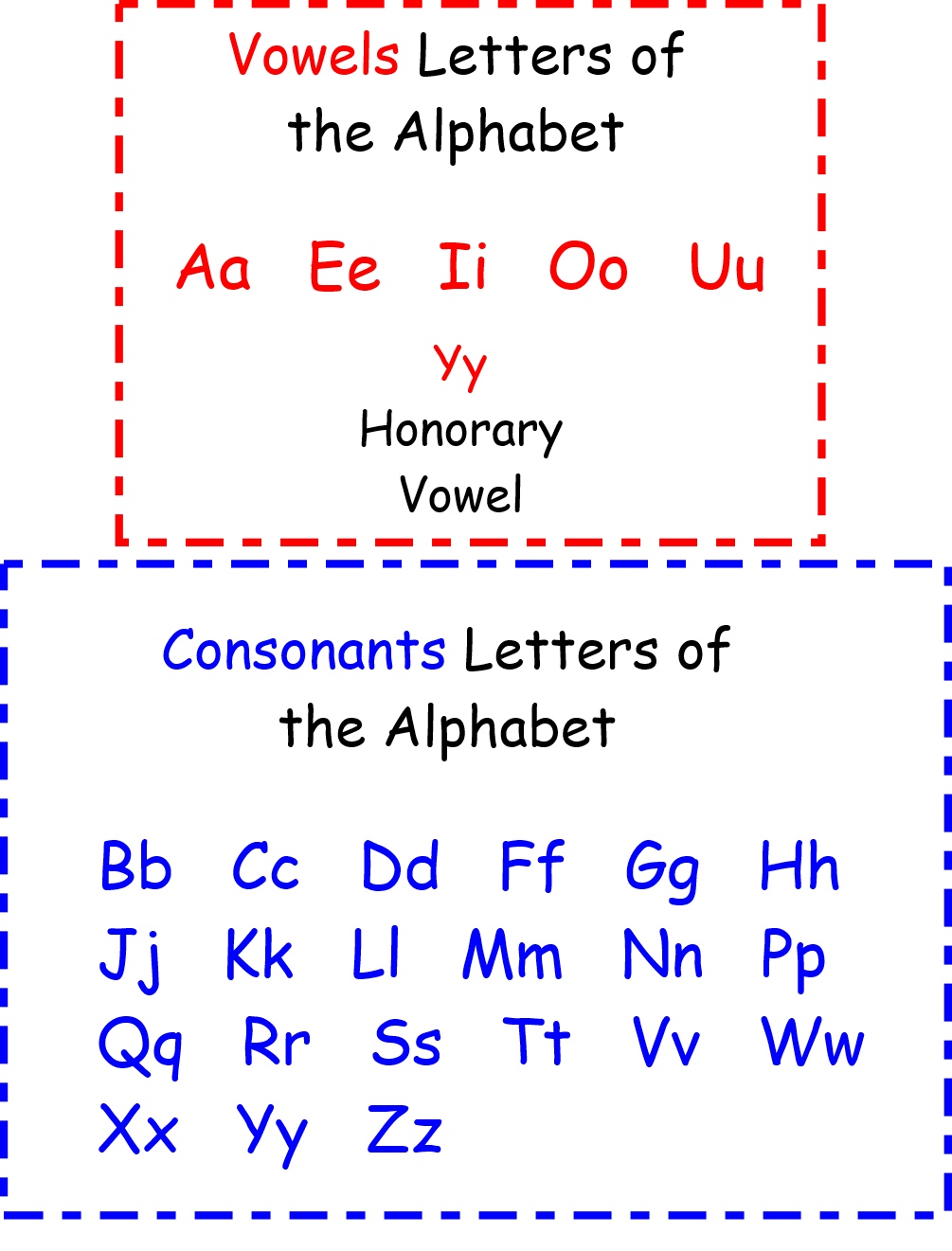
Vowel Letters
The difference is actually very simple: To say A you open your mouth. To say B you close your mouth. In general, when you say a vowel you do not block the flow of air. But when you say a consonant, you block the flow of air, for example by pressing your lips together (as for B) pressing your bottom lip against your teeth (as for F)
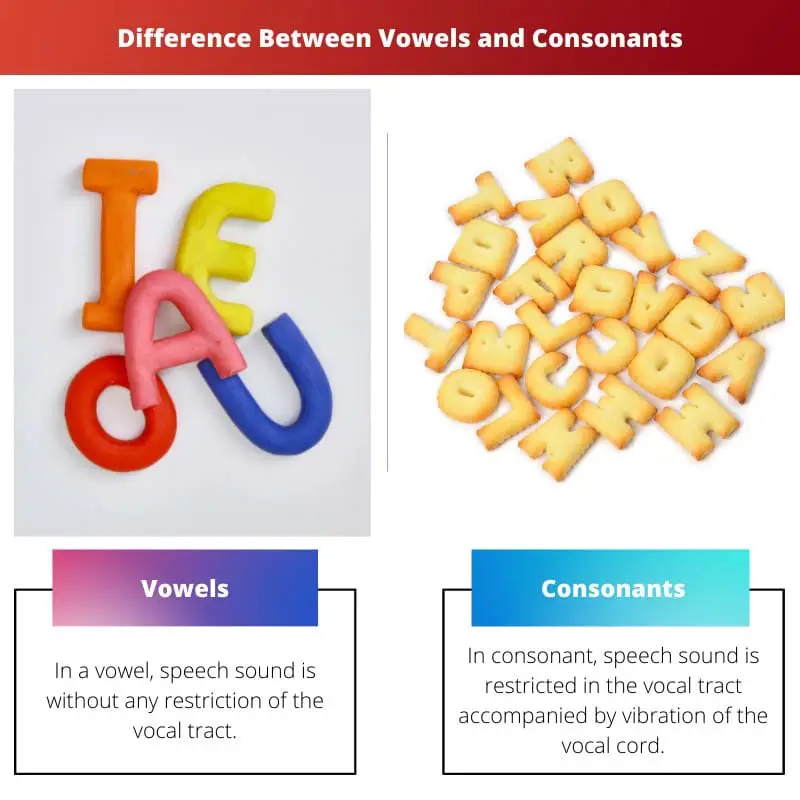
Vowels vs Consonants Difference and Comparison
Therefore, the main difference between vowels and consonants lies in their articulation; a vowel is articulated with an open vocal tract whereas a consonant is articulated with complete or partial closure of the vocal tract. What are Vowels As explained above, vowels are pronounced with an open vocal tract.
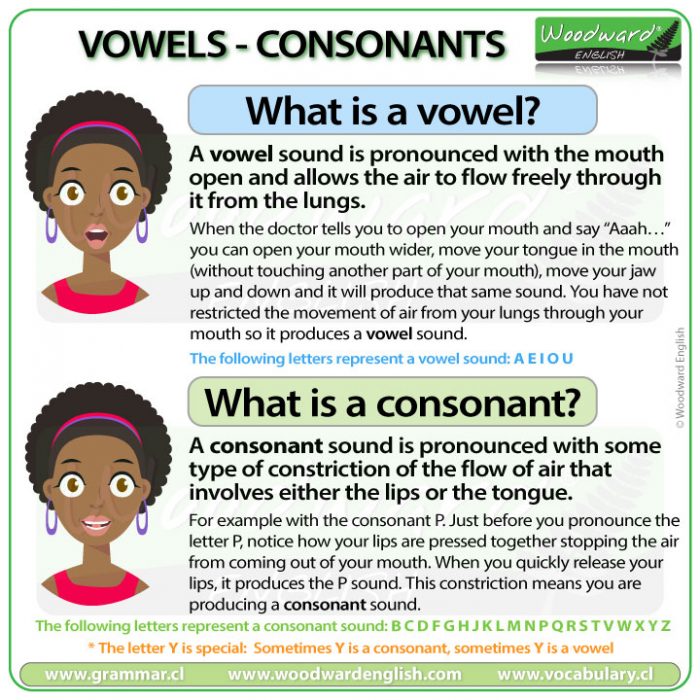
What is a vowel? What is a consonant? The difference between a vowel
Vowels and Consonants List. The vowels are easy to spot because there are only five: a, e, i, o, and u. These vowels can make more than one sound (for example, a can stand for "ah" and "ay"), but all these sounds require only the voice. Vowels can even be put together to form other vocalized sounds like "oo" and "ou."